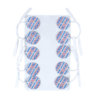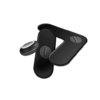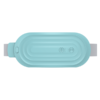Will my baby get enough milk before my milk comes in?

Will my baby get enough milk before my milk comes in?
Your Newborn’s Stomach – Day 1-10
The chart below shows the average size of a newborn’s stomach and how much milk it can hold at birth. Now you can see why your colostrum, or early milk, is more than enough to fill your newborn’s tummy.
But there is more. Researchers have found that on Day 1, the newborn’s small stomach does not stretch to hold more, as it will even a day later.
The chart below shows the average size of a newborn’s stomach and how much milk it can hold at birth. Now you can see why your colostrum, or early milk, is more than enough to fill your newborn’s tummy.
But there is more. Researchers have found that on Day 1, the newborn’s small stomach does not stretch to hold more, as it will even a day later.
Countless hospital nurses have learned the hard way that on the first day when newborns are fed an ounce or two by bottle, most of it tends to come right back up. The walls of the newborn stomach stay firm, pushing out the extra milk rather than stretching to hold it.
On Day 1, a newborn’s stomach can hold about one-sixth to one-fourth of an ounce (5 to 7 ml) per feeding. Not surprisingly, this amount of colostrum is ready and waiting in the breast.
By Day 3, as the baby gets many more of these small feedings, his stomach expands to about the size of a ping pong ball to hold more milk.
By Day 10 it is the size of an extra large chicken egg.
Is it a good idea to give a newborn more milk at each feeding to try to stretch out the stomach sooner? No. This is not a case of more is better. Many small feedings set up a healthy eating pattern right from the start. Experts tell us that it is healthier for adults to eat smaller amounts more often, and the same is true for babies and children. Coaxing a baby to take more milk may lead to overfeeding. If feeling overfull at feedings becomes the norm for a baby, this may lead to unhealthy eating habits that contribute to childhood obesity later.
Is it a good idea to give a newborn more milk at each feeding to try to stretch out the stomach sooner? No. This is not a case of more is better. Many small feedings set up a healthy eating pattern right from the start. Experts tell us that it is healthier for adults to eat smaller amounts more often, and the same is true for babies and children. Coaxing a baby to take more milk may lead to overfeeding. If feeling overfull at feedings becomes the norm for a baby, this may lead to unhealthy eating habits that contribute to childhood obesity later.
Nancy Mohrbacher, IBCLC, FILCA, Lactation Consultant, Ameda Breastfeeding Products
Coauthor of Breastfeeding Made Simple: Seven Natural Laws for Nursing Mothers





